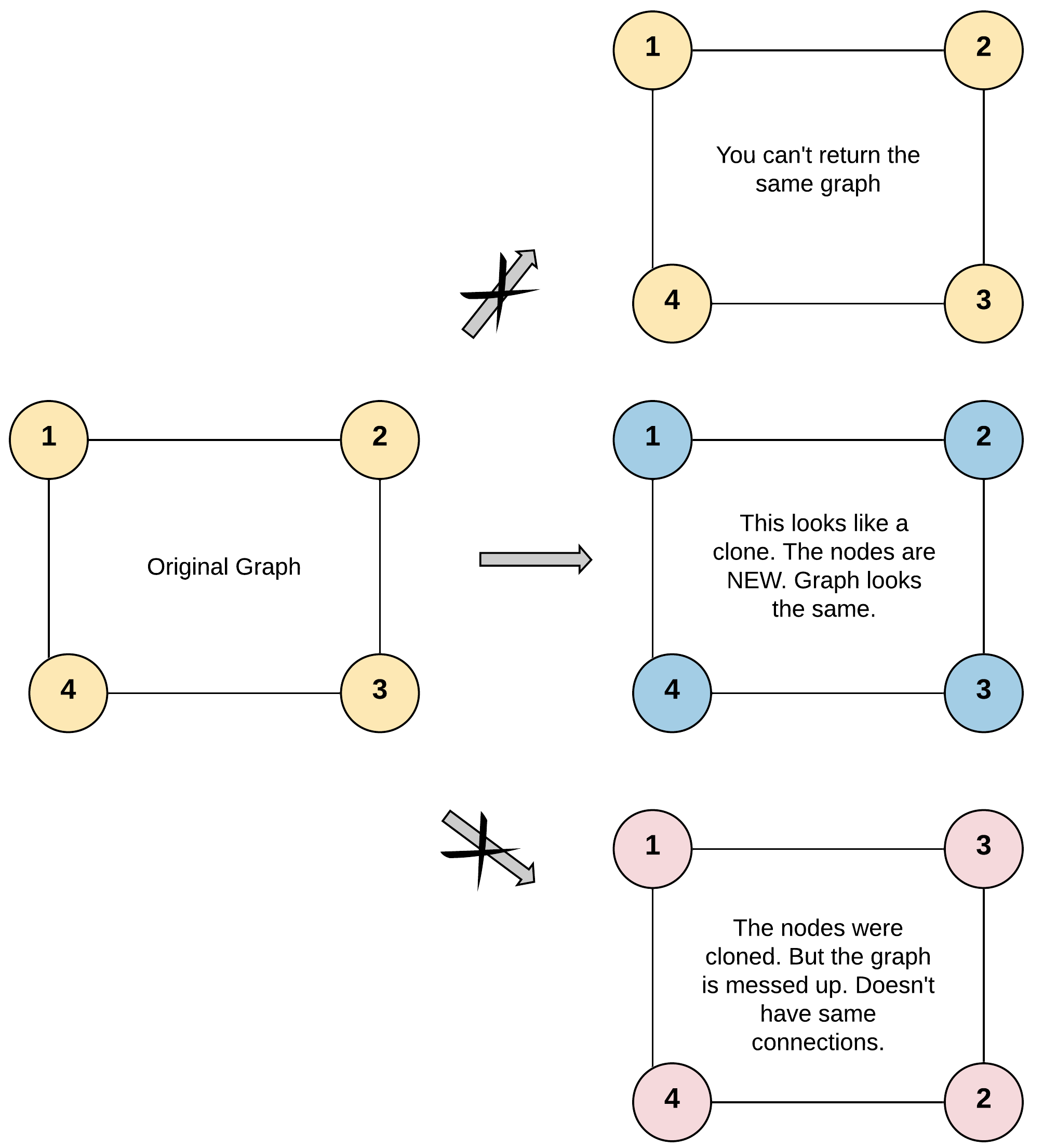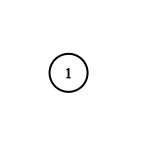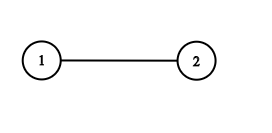133. Clone Graph
Given a reference of a node in a connected undirected graph.
Return a deep copy (clone) of the graph.
Each node in the graph contains a val (int) and a list (List[Node]) of its neighbors.
1
2
3
4
| class Node {
public int val;
public List<Node> neighbors;
}
|
Test case format:
For simplicity sake, each node’s value is the same as the node’s index (1-indexed). For example, the first node with val = 1, the second node with val = 2, and so on. The graph is represented in the test case using an adjacency list.
Adjacency list is a collection of unordered lists used to represent a finite graph. Each list describes the set of neighbors of a node in the graph.
The given node will always be the first node with val = 1. You must return the copy of the given node as a reference to the cloned graph.
1
2
3
4
5
6
7
8
9
| Example 1:
Input: adjList = [[2,4],[1,3],[2,4],[1,3]]
Output: [[2,4],[1,3],[2,4],[1,3]]
Explanation: There are 4 nodes in the graph.
1st node (val = 1)'s neighbors are 2nd node (val = 2) and 4th node (val = 4).
2nd node (val = 2)'s neighbors are 1st node (val = 1) and 3rd node (val = 3).
3rd node (val = 3)'s neighbors are 2nd node (val = 2) and 4th node (val = 4).
4th node (val = 4)'s neighbors are 1st node (val = 1) and 3rd node (val = 3).
|

1
2
3
4
5
| Example 2:
Input: adjList = [[]]
Output: [[]]
Explanation: Note that the input contains one empty list. The graph consists of only one node with val = 1 and it does not have any neighbors.
|

1
2
3
4
5
| Example 3:
Input: adjList = []
Output: []
Explanation: This an empty graph, it does not have any nodes.
|
1
2
3
4
| Example 4:
Input: adjList = [[2],[1]]
Output: [[2],[1]]
|

Constraints:
- 1 <= Node.val <= 100
- Node.val is unique for each node.
- Number of Nodes will not exceed 100.
- There is no repeated edges and no self-loops in the graph.
- The Graph is connected and all nodes can be visited starting from the given node.
Solution#
1
2
3
4
5
6
7
8
9
10
11
12
13
14
15
16
17
18
19
20
21
22
23
24
25
26
27
28
29
30
31
32
33
34
35
36
37
38
| /*
// Definition for a Node.
class Node {
public int val;
public List<Node> neighbors;
public Node() {
val = 0;
neighbors = new ArrayList<Node>();
}
public Node(int _val) {
val = _val;
neighbors = new ArrayList<Node>();
}
public Node(int _val, ArrayList<Node> _neighbors) {
val = _val;
neighbors = _neighbors;
}
}
*/
class Solution {
Node[] map = new Node[101];
public Node cloneGraph(Node node) {
if (node == null) return null;
if (map[node.val] != null) {
return map[node.val];
}
Node clone = new Node(node.val);
map[clone.val] = clone;
for (Node n: node.neighbors) {
clone.neighbors.add(cloneGraph(n));
}
return clone;
}
}
|
Solution 2021-11-22#
1
2
3
4
5
6
7
8
9
10
11
12
13
14
15
16
17
18
| class Solution {
Map<Integer, Node> cache = new HashMap<>();
public Node cloneGraph(Node node) {
if (node == null) return null;
Node curr = cache.get(node.val);
if (curr != null) return curr;
curr = new Node(node.val);
cache.put(curr.val, curr);
for (Node nei: node.neighbors) {
curr.neighbors.add(cloneGraph(nei));
}
return curr;
}
}
|
Solution 2022-01-30#
1
2
3
4
5
6
7
8
9
10
11
12
13
14
15
| class Solution {
Map<Integer, Node> cache = new HashMap<>();
public Node cloneGraph(Node node) {
if (node == null) return null;
if (cache.containsKey(node.val)) {
return cache.get(node.val);
}
Node newNode = new Node(node.val);
cache.put(newNode.val, newNode);
for (Node nei: node.neighbors) {
newNode.neighbors.add(cloneGraph(nei));
}
return newNode;
}
}
|


